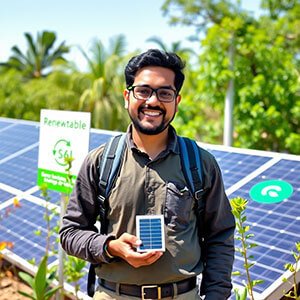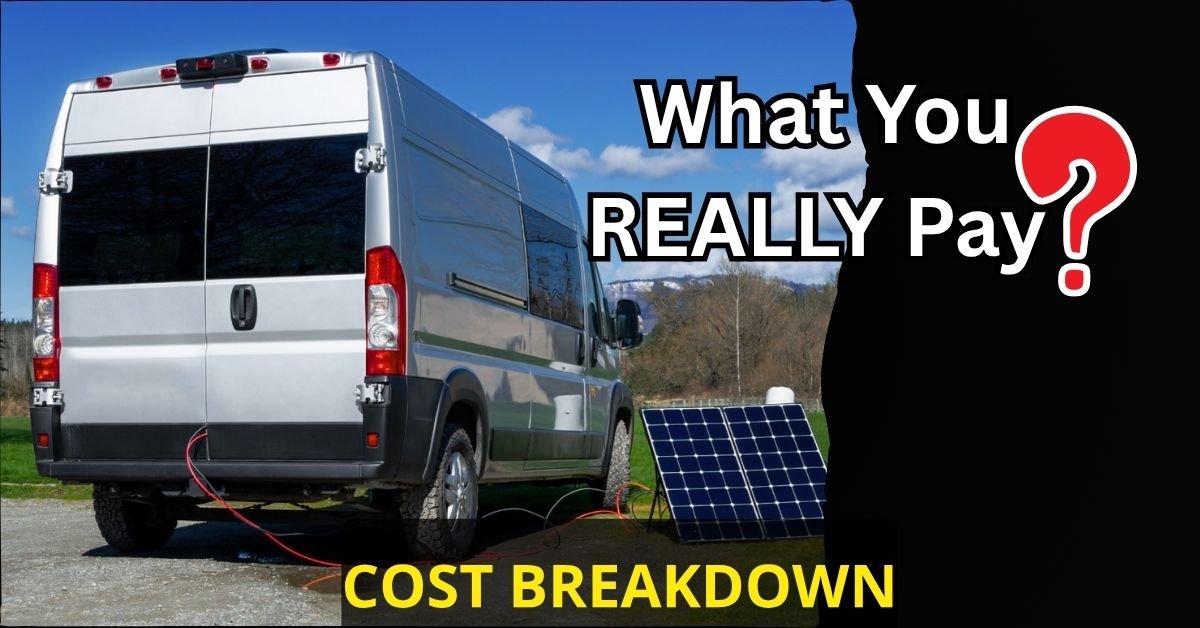Understanding the types of solar inverters is critical to making the most out of your investment.
In this guide, I will discuss in detail the functionality, different types, costs, and which one might be best suited for your needs. In the end, you will have the confidence that you will make a well-informed choice and possibly save some money in the process.
What Is a Solar Inverter?
A solar inverter is a device that converts the direct current (DC) electricity produced by solar panels into alternating current (AC) electricity used by your home’s appliances. It’s essentially the translator between your solar power system and your household energy needs.
Think of it as the heart of your solar system: it regulates, converts, and manages your electricity flow.
Why Is a Solar Inverter Important?
Solar inverters play a critical role in energy production by:
- Converting DC to usable AC power
- Maximizing energy efficiency with Maximum Power Point Tracking (MPPT)
- Ensuring safety by shutting down during grid failures (if grid-tied)
- Monitoring system performance via apps (in smart inverters)

A high-quality inverter can boost your solar savings by optimizing energy output, while a poor one may lead to inefficiencies.
Types of Inverters (String, Micro, Hybrid)
There are three main types of solar inverters currently dominating the market:
1. String Inverters
The most common and affordable option, string inverters connect multiple solar panels in a “string.”
How it works: One inverter connects a series (“string”) of solar panels.
Best for:
- Homes with unshaded roofs
- Simple installations
- Budget-conscious buyers.
2. Microinverters
Microinverters are small inverters attached to each solar panel, optimizing performance individually.
How it works: Installed on each individual solar panel.
Best for:
- Roofs with partial shading
- Complex roof layouts
- Homeowners wanting panel-level monitoring
3. Hybrid Inverters
Hybrid inverters work with batteries, allowing energy storage for off-grid or backup power.
How it works: Combines solar and battery inverter functions.
Best for: Homes with solar + battery backup systems.
Perfect for:
- Homes using solar batteries
- Grid-tied systems with backup capabilities
- Future-proofing your solar setup
✅ Pros & Cons Comparison
| Feature | String Inverters | Microinverters | Hybrid Inverters |
| Cost | 💰 Lower upfront cost | 💸 Higher initial cost | 💵 Mid to high cost |
| Efficiency | 📉 Slightly lower if shaded | 📈 Panel-level optimization | 📊 Smart energy management |
| Maintenance | 🔧 Easier to replace | 🛠️ More units = more potential failures | ⚙️ Complex but efficient |
| Monitoring | 📊 System-level only | 📱 Panel-level insights | 🖥️ Battery + solar monitoring |
| Battery Ready | ❌ Not typically | ❌ No | ✅ Yes |
Tip: If you plan to add battery storage later, consider investing in a hybrid inverter now to avoid costly replacements down the line.
Pricing Breakdown
Here’s a general idea of what you can expect to pay for each type of inverter in 2025 (excluding installation):
| Type | Average Price Range (per kW) |
| String Inverter | $0.20 – $0.40 per watt |
| Microinverters | $0.60 – $1.00 per watt |
| Hybrid Inverter | $0.50 – $0.80 per watt |
For a typical 6 kW system:
- String: ~$1,200 – $2,400
- Microinverters: ~$3,600 fupto $6,000
- Hybrid: ~$3,000 – $4,800
Keep in mind that prices may vary based on brand, region, and whether the system includes battery compatibility or smart tech features.
Factors That Influence Price:
- System size (kW capacity)
- Brand and model
- Smart features (Wi-Fi, monitoring)
- Battery integration capability
- Installation complexity
💡 Pro Tip: Always factor in installation costs, which can add $500 to $1,500 depending on system type and location.
Recommended Inverter Brands
These brands are trusted by solar installers and homeowners alike:
🔹 Enphase Energy
- Known for: Microinverters
- Strength: Unmatched panel-level performance monitoring
🔹 SolarEdge
- Known for: Optimized string inverters
- Strength: Hybrid-friendly and smart energy features
🔹 SMA Solar Technology
- Known for: Reliable string inverters
- Strength: German-engineered, proven long-term performance
🔹 Growatt
- Known for: Budget-friendly hybrid inverters
- Strength: Ideal for small homes or beginners
Always check local availability, installer preferences, and warranty terms when choosing a brand.
✅ FAQs: People Also Ask
What is the most efficient type of solar inverter?
Microinverters tend to be the most efficient, especially in systems with shading or irregular panel placement.
How long do solar inverters last?
Most solar inverters last between 10 to 15 years, though premium models can last up to 20 years with proper maintenance.
Can I upgrade my string inverter to a hybrid later?
Yes, but it may require additional wiring or an entirely new unit. Hybrid-ready models are more future-proof.
You can read: Solar Panel Tax Credits & Rebates in the USA: What You Can Claim?
Final Thoughts,
Which Solar Inverter Do You Need?
Choosing the right type of solar inverter depends on your roof condition, budget, and energy goals:
- Budget-friendly? → String inverter
- Shaded roof? → Microinverters
- Want battery backup? → Hybrid inverter
Need help deciding? Get a free solar consultation from a certified installer to match the best inverter for your home!







